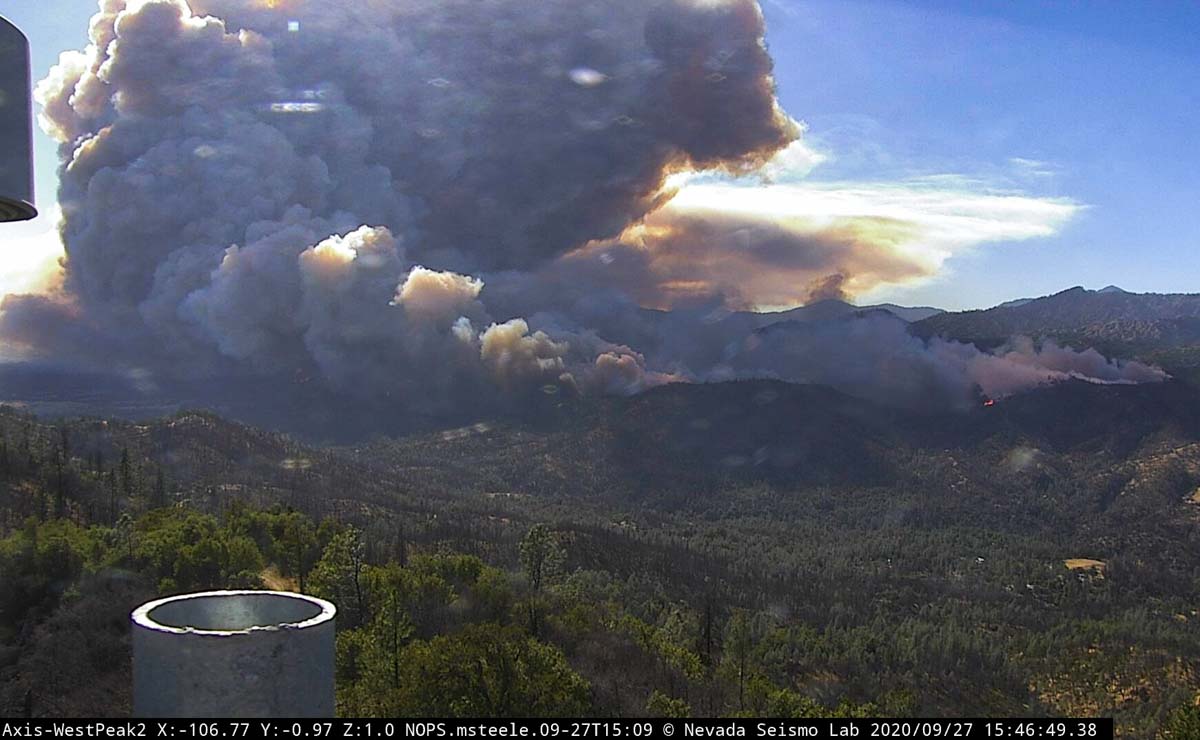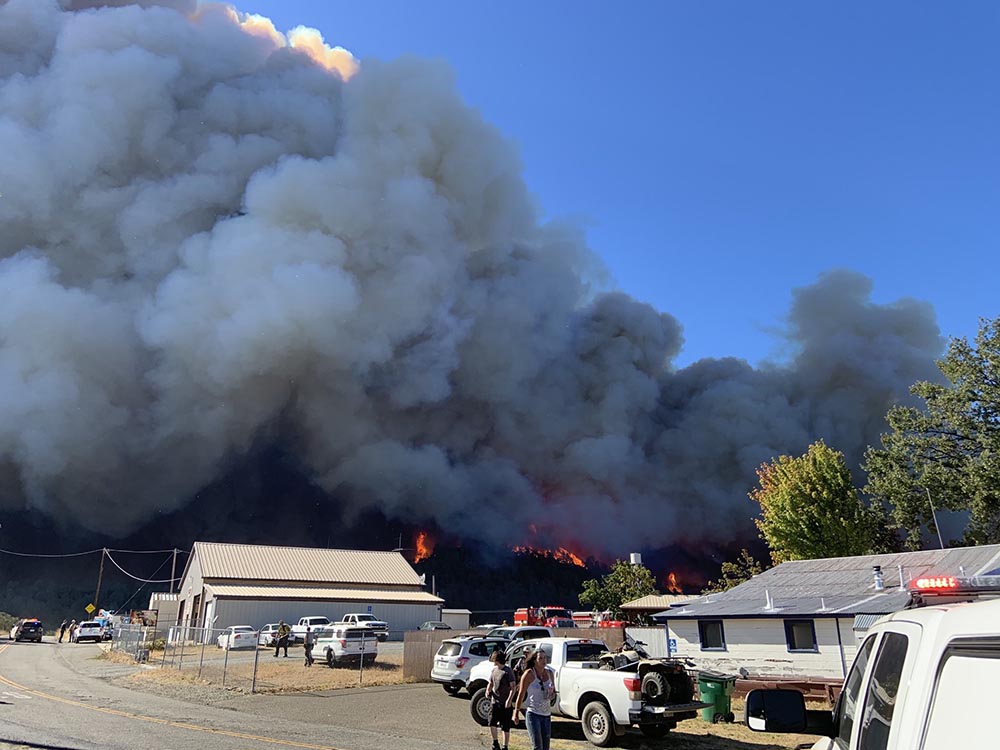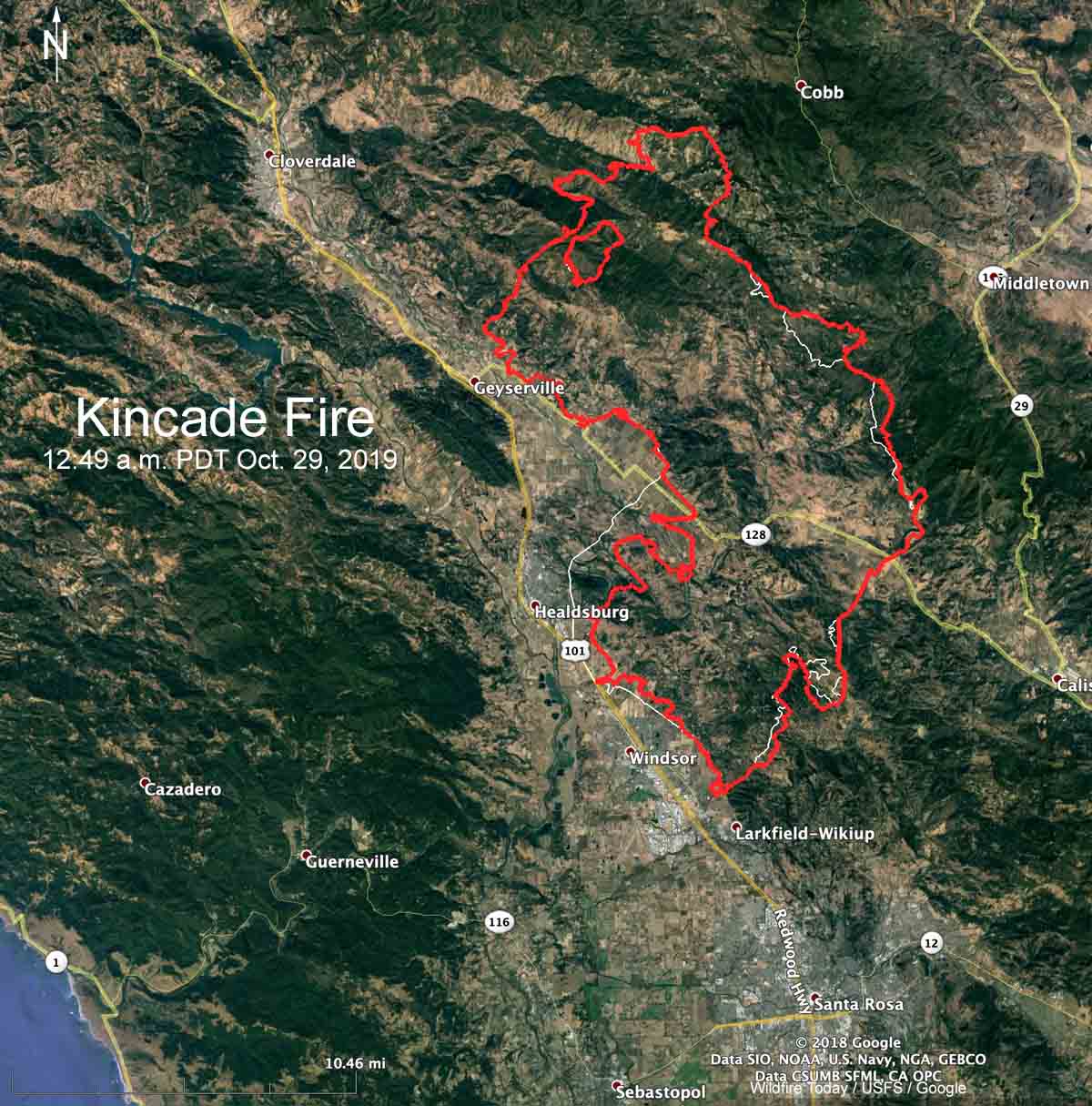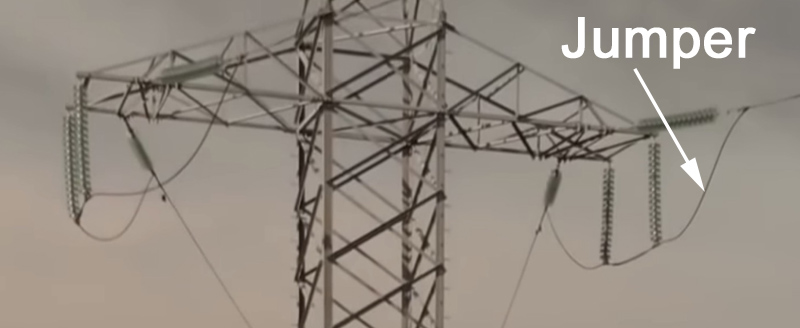Updated at 10:09 p.m. PDT May 1, 2021

The FIRIS Intel 12 mapping aircraft overflew the Southern Fire at approximately 8:00 p.m. May 1 and determined that it had burned at least 1,500 acres. At that time the fire was still actively spreading.
Updated at 7:09 p.m. PDT May 1, 2021
CAL FIRE reported at 6:38 p.m. Saturday that the Southern Fire southeast of Julian, CA had grown to approximately 1,200 acres and 3 structures had been destroyed. About 500 residents have evacuated from the Butterfield Ranch Campground. After evacuation, the assembly point is Agua Caliente.
(To see all articles on Wildfire Today about the Southern Fire, including the most recent, click HERE.)
The fire is spreading to the east pushed by strong winds measured at 33 mph with gusts to 40 at the Harrison Park weather station at 6:50 p.m.
The weather forecast for the fire area produced by the NWS at 5:31 p.m. Saturday predicts the gusty winds will continue through Sunday. For Saturday night, the wind will be out of the northwest at 15 to 20 with gusts to 25, with 45 percent humidity. On Sunday the wind will be a little stronger in the afternoon with 20 percent humidity and a temperature of 82.
Originally published at 5:35 p.m. PDT May 1, 2021

Saturday afternoon the Southern Fire that was reported at about 4 p.m. in East San Diego County in Southern California spread quickly pushed by strong winds. The fire is in the community of Shelter Valley near Highway S-2 south of the Highway 78 Banner Grade about 11 miles southeast of Julian.
At 5:13 p.m. CAL FIRE said evacuations were in progress for the Butterfield Ranch campground.
At about 4:50 p.m. PDT on Saturday an Air Attack aircraft reported structures were threatened and the fire had burned about 40 acres with a critical rate of spread.

At 4:45 p.m. PDT a weather station not far from the blaze recorded 20 mph winds gusting out of the west-northwest at 35 mph. The wind is keeping the smoke close to the ground, rather than rising and creating a large vertical column. The temperature was 82 degrees with 8 percent relative humidity. Under those conditions water or retardant-dropping aircraft would would have reduced effectiveness.









